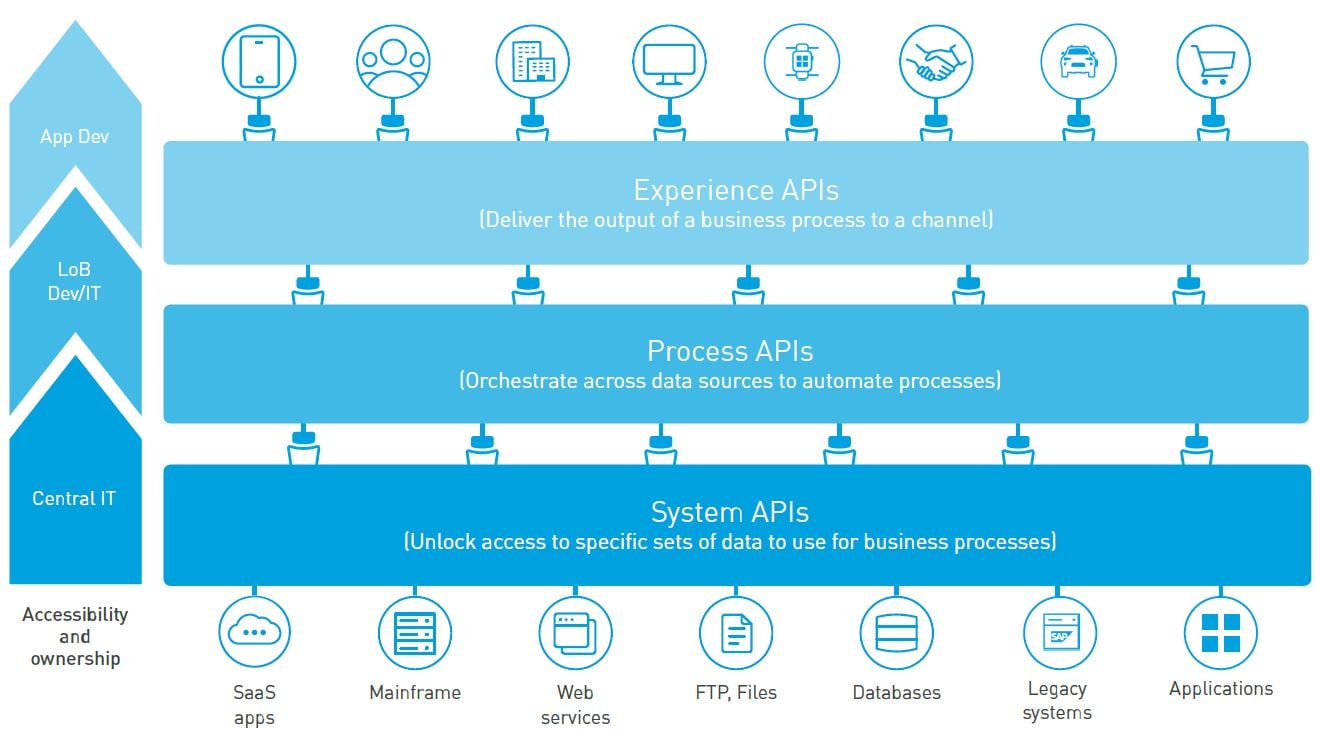Automation is no longer an option in the era of digital transformation. Automation of business processes brings agility to business execution by eliminating multiple processes and repetitive components. Though many solutions have been evolving to conduct smooth automation of business processes, they fall short due to a lack of deep domain knowledge. To ensure a smooth and secure business process automation strategy, APIs have become one of the best solutions.
Why Businesses Should Use API Based Automation Solutions
Custom Code Usage
The process of automating business processes requires filling the functionality gaps in business systems. To fill these gaps, custom code is used. The problem here is the absence of visibility into the custom code, preventing IT from implementing modifications despite the constant need for adopting new tools and adapting processes. Despite the customizations, the need for integration does not go away. As a result, systems are ultimately connected point-to-point, leading to technical debt and complexities as new automation requirements arise.
Single Point Solutions
Other organizations take the approach of deploying a single solution. However, these solutions are incomplete because they prevent teams from driving the reuse of existing assets to meet broader business needs. Additionally, the danger of point-to-point integration remains as new automation needs arise, the standalone solution fails to meet those needs.
Point-to-Point Integration
Traditional integration and automation solutions and approaches focus too much on service production but not enough on discovery and consumption that is enabled by a complete, unified platform. Without a central repository and developer portal, the business is not able to discover what has already been delivered. Additionally, the lack of a unified platform prevents businesses to monitor the consumption of assets, control access or incorporate proper governance.
Apart from the points mentioned above, here are some business applications to look out for:
- Demands various data entries into multiple systems
- Maintain data in multiple systems wastes time and manual efforts
- Automation requires integration of dissimilar systems/applications, otherwise data flow inconsistencies occur
- Enabling customers to use company applications securely from their machines may be risky
- Developing Integration sand automation of complex domains and has a high-risk factor, as these cant risk shedding legacy systems.
- Entering data into multiple systems is redundant.
- Transform your business with a Mobile Enterprise Integration solution.
Business process automation (BPA) is defined as the automation of complex business processes and functions beyond conventional data manipulation and record-keeping activities, usually through the use of advanced technologies."
- Gartner
Why APIs Are Best Suited for Business Process Automation
Issues with legacy approaches:
- Time consuming
- Increased maintenance costs and efforts
- Systems could remain tightly coupled and secure, but lack transparency
- The lack of flexibility in these solutions impose a lack of agility in accommodating changes to the existing system
- Induces overheads in altering workflows
In this situation, to ensure smooth business process automation APIs can be a better option.
An API, or Application Program Interface, is a specific set of routines, protocols, or tools for building software applications. They provide all the tools necessary for software components to interact properly with one another.
The API is a discrete component that serves as an agreement between two application or processes ensuring a secure share of information. These exist either as an individual component or clustered as a one to exhibit business functionality. For the workflows to happen, the end-to-end application doesn't need to be of the same technology or functional use case. The core strength of APIs comes in especially when offering connectivity solutions to legacy systems. Without having to replace the existing legacy systems, APIs offer seamless connectivity in ensuring secure and conflict-free communication between distinct business applications/systems with legacy systems to ensure without having to worry about the system configurability on the other end. This way APIs enable business automation and pursue their digital transformation aspirations.
With a digital platform, these APIs are only built once and perpetually discovered and reused for other business automation efforts. This is fundamental to developer productivity, as the ability to reuse APIs removes the need to repeatedly develop new code to automate business processes. APIs offer better agility by aiding business systems easily integrate with any number of disparate or similar applications/processes that are external or internal to the business. This way API led connectivity solutions encourage friction-less process automation with the help of outside tools.
 Figure: Business Process Automation through API
Figure: Business Process Automation through API
The figure above clearly indicates how APIs have evolved as a key IT operation model and adding value to the business automation process despite having legacy systems. The important aspect with APIs is it enables companies to have agility in business process automation. Organizations need a new API-led connectivity to connect data to applications through reusable and purposeful APIs.
Benefits business process automation brings through APIs:
- Improves transparency and insight resulting in improved efficiency and productivity
- Applies proper technology solutions to scale business
- Controls cost and stability
- Provides flexibility to business systems in case of news adoptions
- Stabilizes software ecosystem
- Expands consistencies in data management
- Ensures similar digital experiences across dissimilar systems
- Eliminates pain of integrating new systems
- Helps manage all APIs in one location
- Secures and rapidly exposes data to web apps and other devices in one platform
















